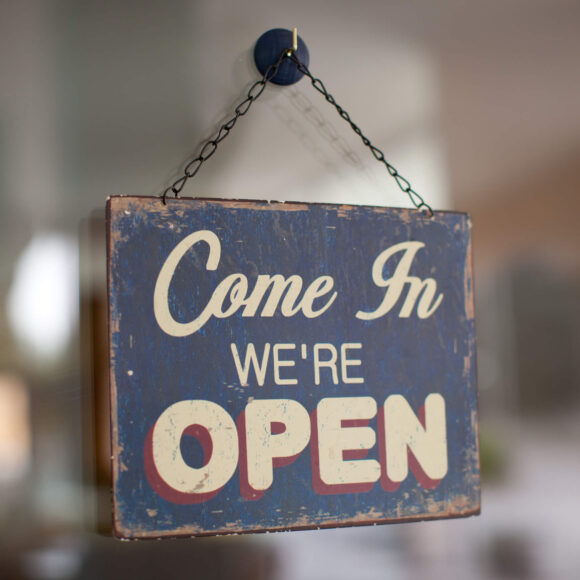How to create effective social media marketing content
Editorial Team
6 min read
There’s no denying that social media has revolutionized the way businesses connect with audiences. It’s not only a fundamental component of any savvy marketing strategy, social media marketing is all about creating engaging content and connecting with the right people at the right time.
When used effectively, your small business can craft content that speaks directly to your target audience, promotes your offerings, builds a community, and drives traffic to your doorstep, both virtually and physically. What’s even better is that social media marketing provides small businesses with an affordable way to reach new customers and carve out their own unique identity in a crowded market.
Here are three ways you can improve your social marketing strategy today.
1. Consider both organic and paid content
When it comes to posting consistent content on your channels, there are two types to consider: organic and paid. Both have benefits and limitations, but together they create a balanced social approach designed to meet the unique needs of both your business and your audiences.
Organic social media
- What it is: Organic social media is any content that you make and post without putting money behind it to extend its reach. This can be posts, videos, stories, and more. These posts typically reach audiences who are already following your channels, or who find your content because they follow similar brands, hashtags, or topics.
- When to use it: Organic social is great for publishing daily (or weekly) as a way to connect with your existing audiences, create a community, or establish your brand’s personality and voice. As Clover’s social team put it in a recent webinar, “Organic social is about brand awareness. It’s building your brand and community. So, the reach is dependent on your engagement and the [platform’s] algorithm.”
Paid social media
- What it is: Paid social media is more similar to advertising: you pay for your posts to get a “boost” to reach a wider audience set of people who are likely to shop at your business.
- When to use it: Because it’s designed to target specific audiences and reach more eyes, paid social content is great for when you want to raise brand awareness, promote a new product or event, attract new customers, or drive more sales. “Paid social can really expand the reach of your brand in a really fast way. It definitely offers an opportunity for you to reach those target audiences that you’re looking for, especially if you’re a local business that wants to attract people around your area,” said Clover’s social media team.
2. Leverage social media data and analytics to get to know your customers
One of the keys to successful social media marketing comes down to data as a way to get to know your audiences. Understanding their demographics and psychographics can help you create content tailored to their interests, and ultimately help you boost sales. And amazingly, you might already have a critical tool you need in place: your POS system.
- Pull real-time customer insights with your POS system: The amazing thing about using a POS system for your business is that it allows you to track more than sales. By leveraging your point-of-sale reporting, you can easily pull data on a weekly or monthly basis to identify customer habits, including top-selling products, busiest days, and number of repeat customers. All of that data gives you valuable insights into customer behaviors that can help you shape and frame your social media strategy.
- How to use POS data to inform social media content: Say you own a coffee shop and after pulling a monthly report from your quick service restaurant POS system, you learn that Wednesdays are your slowest sale days and that iced coffees are your hottest selling product. These insights offer an incredible springboard to inspire what content you post. For example, on your slow days, create an Instagram story offering customers a Wednesday-only deal for half off their favorite iced coffee. Or on Twitter, post a word of the day on Wednesdays offering customers a free treat with their purchase if they mention that word during checkout. Social media marketing isn’t a magic bullet–but through some trial and error you can learn what really resonates with customers and what kind of content will help boost sales.
3. Develop content that plays to each social channel’s strength
Not every social channel is created equal. While promoting the same content in the same format across multiple channels may have worked for social media marketing once upon a time, social platforms today are more nuanced, and require a more bespoke approach to content creation. Knowing the key differences between each platform and catering content to their strengths can make all the difference in engagement levels, reach, and customer acquisitions.
- When to use LinkedIn: LinkedIn is the world’s largest professional network on the internet. Because it is often a place where people search for new jobs, strengthen professional relationships, and build skills for their careers, it’s best used as a platform for content that promotes a company’s culture, job openings, or accomplishments.
- When to use Instagram: Instagram is a community builder, a marketplace, and an inspirer. It’s often where people–especially Gen Zers–turn to research products and services. As a visual platform focused on photo and video content, Instagram offers a lot of creative ways to connect directly with audiences to showcase what your small business has to offer.
- When to use Twitter: Twitter is all about real-time connection. It’s a place to share immediate updates, get input directly from your audience (through polls, for example), and to build a following. Twitter’s format lends itself well to businesses that are always on the move, like food trucks, pop-ups, or seasonal businesses.
- When to use TikTok: TikTok has quickly become one of the most influential social media platforms that not only drives cultural trends, but accelerates them. Through video, users share product reviews, behind-the-scenes footage, how-to’s and tutorials, and more. More than anything, TikTok is a place where people come to learn and be entertained.
- When to use Facebook: Facebook is where you can share everything from photos to essential company updates. Similar to TikTok, videos do well on this platform, and there are countless groups that you can join to connect with key audiences. For example, if you own a pet store, joining Facebook groups centered around pets becomes a great and easy way to interact with potential customers and build relationships. Although some are stepping away from the platform, it’s still a great place to connect with varied audiences who share your interests.
Other articles and resources you may like
- How to leverage social media for a successful Small Business Saturday
- These 5 merchants show you how to crush it on social media
- WEBINAR: Promote and grow your business with social media marketing
Related Posts
It’s a sign: Best practices for in-store signage
5 small business website design mistakes to avoid
Popular Topics
Stay in touch
Sign up and learn more about Clover.
Thank you for your subscription!
More posts about starting a small business
eBook





